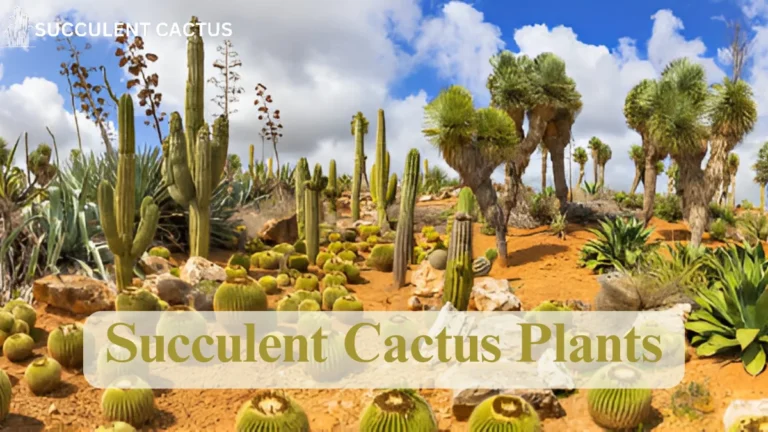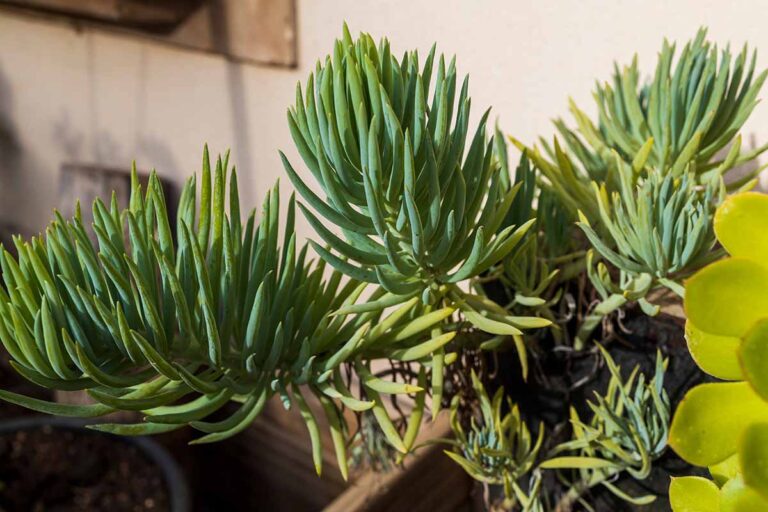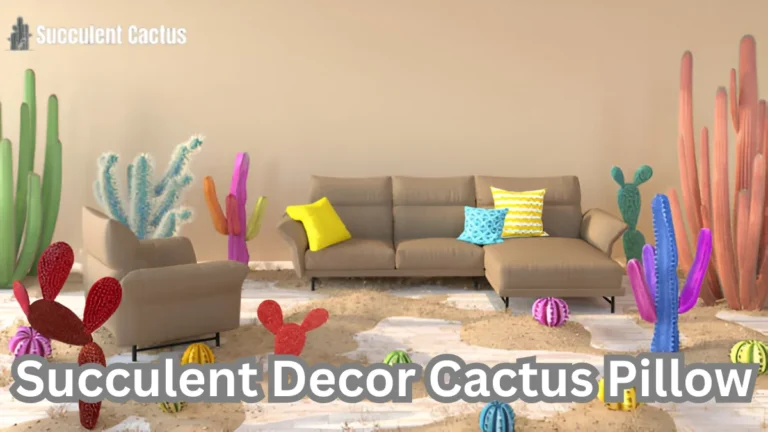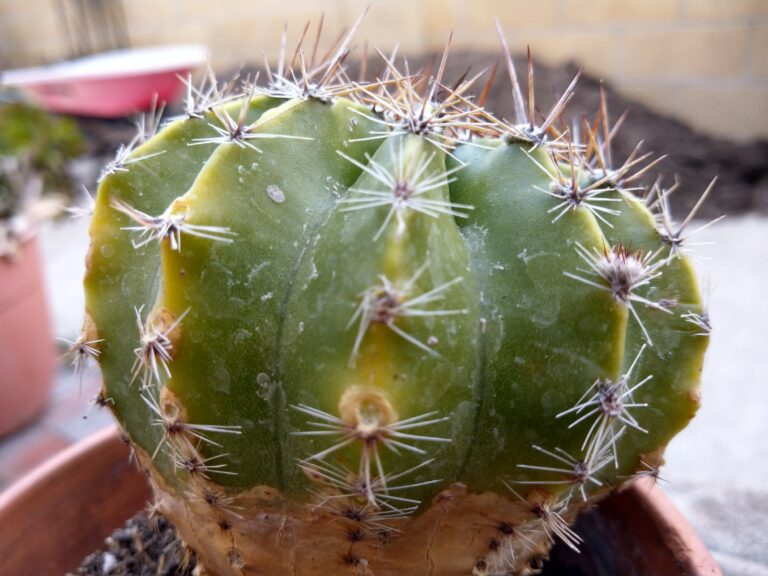Can You Use Succulent Soil for Cactus? Make Your Own Cactus Succulent Soil

Cacti and succulents are unique plants that thrive in well-draining, nutrient-balanced soil. But is succulent soil suitable for cacti? And if not, how can you make your cactus succulent soil? In this detailed guide, we’ll explore the differences, similarities, and best DIY soil mixes to keep your plants healthy.
Understanding the Differences Between Cactus and Succulent Soil
Let’s understand their key differences before deciding if succulent soil works for cacti.
What Is Succulent Soil?
Succulent soil is a lightweight, well-draining mix designed to prevent root rot and support healthy growth. It typically includes:
- Sand – Improves drainage.
- Perlite or Pumice – Increases aeration.
- Organic matter – Provides essential nutrients.
What Is Cactus Soil?
Cactus soil is similar to succulent soil but even grittier, ensuring minimal water retention. Cacti grow in desert-like conditions, requiring:
- More sand and gravel for rapid drainage.
- Less organic material to prevent excessive moisture retention.
Key Differences Between the Two
| Feature | Succulent Soil | Cactus Soil |
| Drainage | Good | Excellent |
| Organic Matter | Moderate | Minimal |
| Sand Content | Medium | High |
| Moisture Retention | Moderate | Low |
Can You Use Succulent Soil for Cactus?
While succulent soil can work for some cacti, it may not be ideal for all types.
When Succulent Soil Is Suitable for Cactus
- If the succulent mix contains a high percentage of sand and perlite.
- For jungle cacti like Christmas cactus (Schlumbergera), which require slightly more organic matter.
When Succulent Soil Is Not Ideal for Cactus
- If the soil retains too much moisture, leading to root rot.
- If you’re growing desert cacti like Golden Barrel Cactus or Saguaro, which require extra-fast draining soil.
How to Modify Succulent Soil for Cactus
If you only have succulent soil, you can improve it by:
- Adding more sand (50%) to improve drainage.
- Mixing in perlite or pumice (20%) to increase aeration.
- Reducing organic matter to avoid excessive moisture retention.
Essential Components of Cactus and Succulent Soil
A perfect soil mix contains three main components:
1. Inorganic Materials for Drainage
Inorganic materials help prevent water from accumulating around the roots. These include:
- Sand – Sharp or coarse sand ensures fast drainage.
- Perlite – Light volcanic rock that improves aeration.
- Pumice – Adds porosity while retaining minimal moisture.
2. Organic Materials for Nutrients
Although cacti need less organic matter, some nutrients are essential for growth. Common organic materials include:
- Coconut coir – Provides structure while preventing excessive moisture retention.
- Compost – Slowly releases nutrients but should be used in minimal amounts.
3. pH Balance and Nutrient Considerations
Cacti prefer a slightly acidic to neutral pH (5.5 – 7.0). Adding dolomitic lime helps maintain the correct balance.
How to Make Your Own Cactus Succulent Soil
Creating your own DIY cactus and succulent soil ensures you get perfect drainage and nutrients.
Basic DIY Cactus Succulent Soil Recipe
Ingredients:
- 2 parts sand (coarse or horticultural sand).
- 1 part perlite or pumice.
- 1 part organic matter (coconut coir or compost).
Step-by-Step Instructions
- Mix all components thoroughly in a large container.
- Test the texture by adding water; it should drain within seconds.
- Adjust if needed: Add more sand if it holds water too long.
Alternative Soil Mix for Desert Cacti
For dry-climate cacti, modify the recipe:
- 3 parts sand.
- 1 part pumice.
- Minimal organic matter.
Signs Your Cactus Soil Needs Improvement
Using the wrong soil mix can harm your cactus, leading to issues like slow growth, root rot, or dehydration. Identifying these signs early can save your plant.
Symptoms of Poor Drainage in Cactus Soil
Cacti need fast-draining soil. If the mix holds too much water, problems arise. Look for these warning signs:
- Yellowing leaves or stems – Indicates overwatering.
- Mushy or black roots – A sign of root rot.
- Soil stays damp for days – Suggests poor drainage.
- Shriveled appearance – This may mean the roots aren’t absorbing water properly.
How to Test If Your Soil Drains Properly
Perform this simple drainage test:
- Take a dry pot with a drainage hole.
- Fill it with the soil mix.
- Pour one cup of water over the soil.
- If the water takes longer than 30 seconds to drain, the mix is too dense.
Fixing Poor Drainage Issues
If your cactus soil isn’t draining well, adjust the mix:
| Problem | Solution |
| Soil stays wet for too long | Add more sand and perlite |
| Water runs off too fast | Increase organic matter |
| Soil compacts over time | Use pumice or coarse sand |
By adjusting the soil composition, you can create the perfect environment for your cactus.
Common Soil Mistakes to Avoid
Many plant owners unknowingly make mistakes that harm their cacti. Avoiding these common errors ensures your plants stay healthy.
Using Regular Potting Soil for Cacti
Regular potting soil contains too much organic material, which retains moisture and causes root rot. Instead, always use a well-draining mix designed for succulents or cacti.
Comparison: Regular Potting Soil vs. Cactus Soil
| Feature | Regular Potting Soil | Cactus Soil |
| Water Retention | High | Low |
| Drainage | Poor | Excellent |
| Ideal For | Houseplants | Cacti & Succulents |
Using a Pot Without Drainage Holes
Even if you use great soil, a pot without drainage holes will trap excess water, leading to fungal infections and root decay.
Adding Too Much Organic Material
While organic matter provides nutrients, too much compost or peat moss leads to water retention, which is harmful to cacti.
Adjusting Soil for Different Cactus Species
Not all cacti have the same soil requirements. Some need extra-fast drainage, while others thrive in slightly moisture-retentive soil.
Desert Cacti Soil Needs
Desert cacti like Saguaro, Prickly Pear, and Barrel Cactus require a highly porous, sandy mix.
Best Soil Composition for Desert Cacti:
- 60% sand or grit
- 20% perlite or pumice
- 20% minimal organic material (coconut coir or compost)
Jungle Cacti Soil Needs
Unlike desert cacti, jungle cacti like the Christmas Cactus and Orchid Cactus thrive in slightly moisture-retaining soil.
Best Soil Composition for Jungle Cacti:
- 40% organic matter (peat moss, compost)
- 30% sand or perlite
- 30% bark for aeration
How to Modify Your Mix for Specific Cactus Types
| Cactus Type | Ideal Soil Mix |
| Desert Cactus | 60% sand, 20% perlite, 20% compost |
| Jungle Cactus | 40% organic, 30% sand, 30% bark |
| Epiphytic Cactus | 50% bark, 30% sand, 20% organic |
Understanding your cactus type helps in creating the best soil for its growth.
Testing Your Cactus Soil at Home
You don’t need fancy equipment to test cactus soil. These simple home tests can tell you whether your mix is ideal.
Drainage Test
- Fill a pot with soil.
- Pour a cup of water.
- If water drains in less than 30 seconds, the mix is perfect.
Soil Aeration Test
- Squeeze a handful of dry soil.
- If it crumbles easily, it has good aeration.
- If it clumps together, it’s too dense.
pH Level Test
- Use a soil pH meter or pH strips.
- Cacti thrive at pH 5.5 – 7.0.
- If too acidic, add dolomitic lime.
- If too alkaline, mix in peat moss.
Testing ensures your cactus gets the best growing conditions.
Seasonal Adjustments for Cactus Soil
Cactus soil needs adjustments depending on the season.
Summer vs. Winter Soil Needs
| Season | Watering Needs | Soil Adjustment |
| Summer | Frequent watering | Use fast-draining mix |
| Winter | Minimal watering | Increase pumice for aeration |
Preparing Soil for Dormancy (Winter Months)
- Reduce watering frequency.
- Use a drier soil mix with less organic matter.
- Keep soil light and aerated to prevent fungal infections.
By adjusting soil seasonally, your cacti stay healthy year-round.
Choosing the Right Pot for Cactus and Succulent Soil
Even with great soil, using the wrong pot can harm your cactus.
Best Pot Materials for Cactus Plants
| Pot Material | Benefits |
| Terracotta | Absorbs excess moisture |
| Ceramic | Holds moisture longer |
| Plastic | Retains too much water |
Drainage Hole is a Must
Always use a pot with drainage holes to prevent water accumulation.
Choosing the Right Size
- Too big = Retains too much water.
- Too small = Root crowding.
- Ideal size = 1-2 inches larger than root ball.
Final Tips for Healthy Cacti in Succulent Soil
Follow these essential tips to ensure your cactus thrives.
Top Soil Care Tips
✔ Use well-draining soil with sand and perlite.
✔ Check soil moisture before watering.
✔ Repot every 2-3 years to refresh nutrients.
✔ Test pH levels for healthy roots.
✔ Choose a pot with drainage holes.
By following these guidelines, your cacti will grow strong and healthy. 🌵
FAQs About Cactus and Succulent Soil
- Can I use succulent soil for all cacti?
Some cacti can grow in succulent soil, but desert cacti need grittier soil for better drainage. - How do I make cactus soil drain faster?
Add more sand and perlite to improve drainage. - Can I use regular potting soil for cacti?
No, it holds too much water and can cause root rot. - Do cacti need fertilizer in soil?
Yes, but use a diluted cactus fertilizer every few months. - What is the best soil mix for desert cacti?
75% sand, 25% perlite, and minimal organic matter.
Conclusion
Using the right soil mix is essential for cactus and succulent health. By understanding soil components, adjusting for species, and modifying drainage, you can create the perfect growing environment for your plants. 🌵






